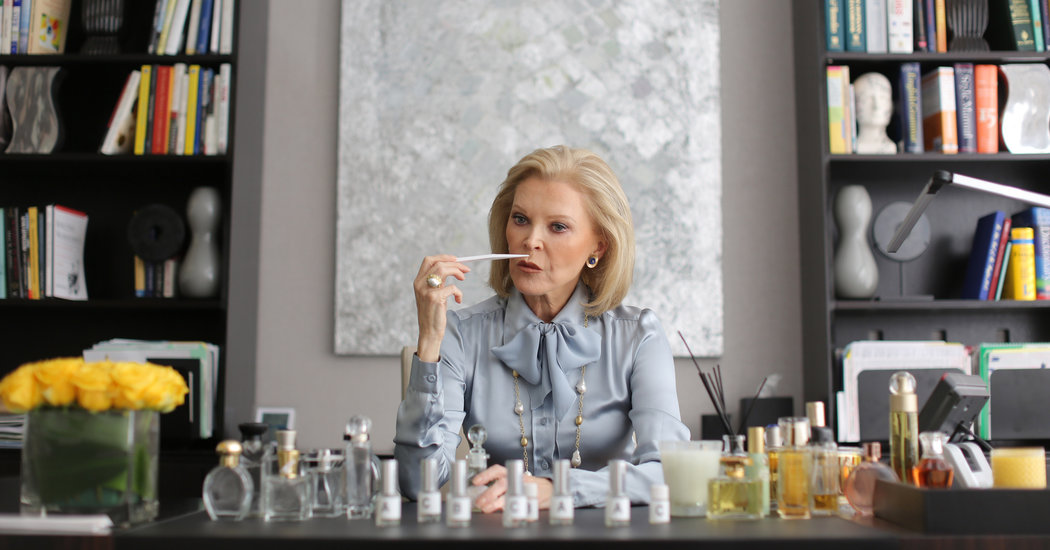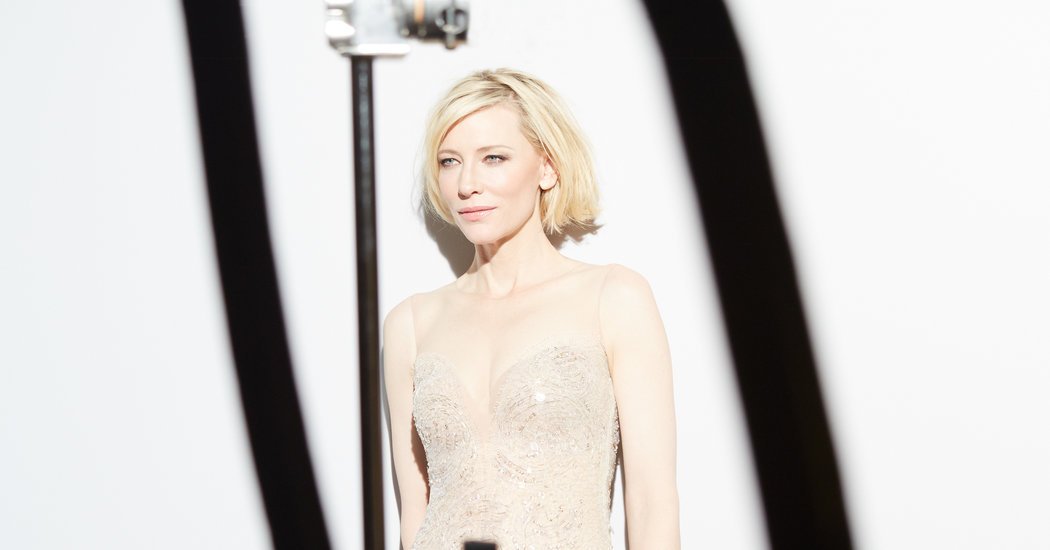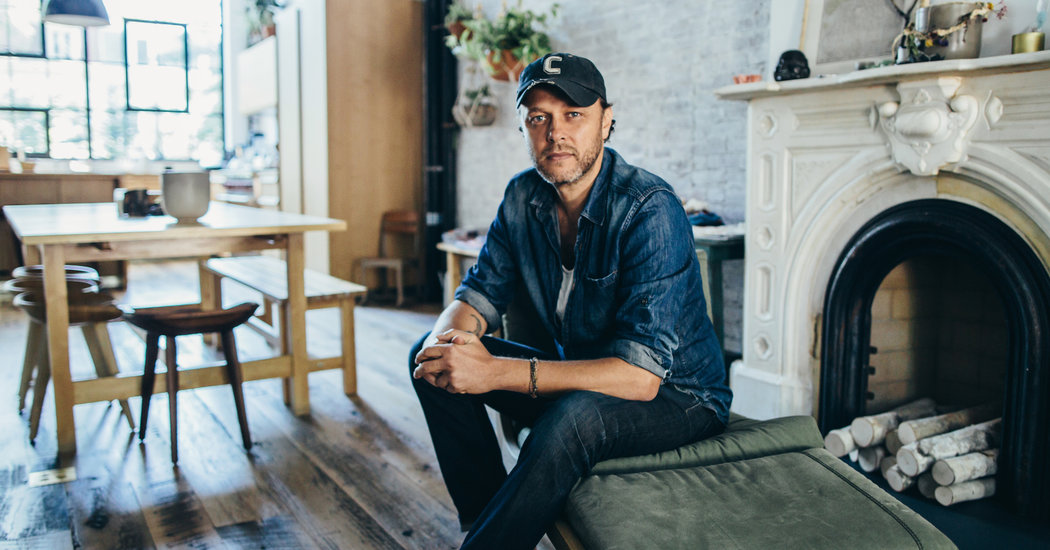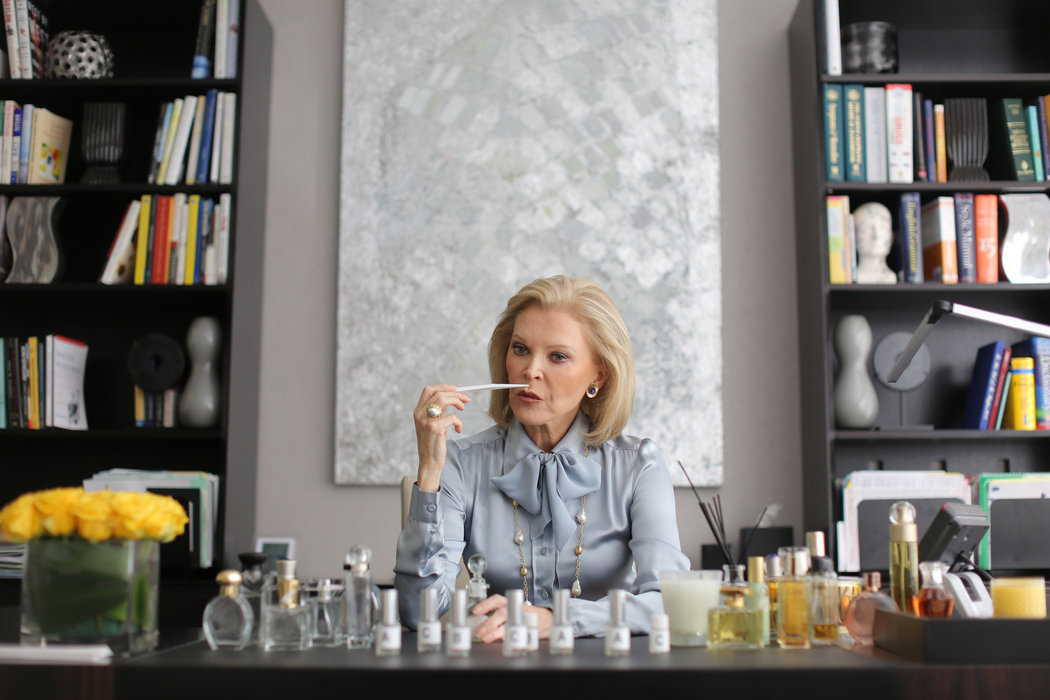
Credit
Michael Appleton for The New York Times
As part of a trip to France in 1984 to study floral painting, Dianne Bernhard spent time in Monet’s gardens at Giverny. It was there, among the flowers that inspired him, that she heard Cartier was creating a new perfume in Paris made with jasmine, roses and vanilla.
“I said, ‘I’m going to go straight to Cartier as soon as I get out of class,’ ” said Mrs. Bernhard, a painter and former president of the National Arts Club in New York. “I loved the smell.”
The fragrance she found there was a musk, but she didn’t like how it smelled on her skin. But instead of giving up, she had a chemist begin mixing, and he ended up creating the scent that Mrs. Bernhard — and only Mrs. Bernhard — has worn for the last three decades.
“It was just something that became me,” she said. “If the scent of this woman changed, my grandchildren, my family and many of my close friends would be sad.”
When most people think of bespoke goods, they think shirts, suits, wedding gowns, maybe an haute couture dress. But bespoke perfume takes the world of personalization to an entirely new level.
For starters, it costs a lot to find the right mix of flowers and oils to create a smell particular to you.
Thomas Fontaine, a perfumer at Jean Patou who helped revive Joy, a perfume that has been around for eight decades, and create Joy Forever, said it could cost someone $30,000 to $50,000 to create a personal scent.
“The most expensive thing is the development,” he said. “To create a fragrance for only one person or one million people, the cost is the same.”
In contrast, Joy is a comparative bargain at $800 an ounce.
But taste is tough to price. Mrs. Bernhard said her perfume had certainly not been cheap over the years. She said it cost several thousand dollars for the scent to be created, back in 1984, and over the years, it has cost the equivalent of several hundred dollars a bottle.
Laurent Le Guernec, a perfumer at International Flavors and Fragrances, a large perfume creator, and the recipient of eight awards for perfume design, said the challenge was always to personalize it. When he created Lovely, a scent for the actress Sarah Jessica Parker, the perfume was meant to appeal to the millions of fans who wanted to smell just like her. But what was that scent?
“She was creating something for herself and hoped other people would like it,” he said. “She had a very lavender oil, a musk oil and that was basically it. And she said, ‘Can you do something like that?’ ”
Each year, about a thousand fragrances are created and introduced by perfume companies in a similar way, up from about 90 scents in the 1970s, said Elizabeth Musmanno, president of the Fragrance Foundation, a perfume industry group.
Given that selection — on top of existing perfumes — Ms. Musmanno questioned the need for a bespoke scent in the first place.
“While I think it’s very interesting for certain people to try, it’s also kind of the equivalent of me hiring a great chef and telling him how to cook,” she said. “You need training for years and years to begin to be able to smell the difference in certain fragrances. For a lot of money you could come out with something that isn’t any better than what is on the market today.”
For those who want to try, it begins with a conversation.
Audrey Gruss, a former marketing and advertising executive, is just beginning the process of creating a fragrance. She has a name — Hope Springs Eternal — and a purpose — to bring in donations to the Hope for Depression Research Foundation. She founded the charity eight years ago to find ways to battle depression, which plagued her mother, Hope.
Mrs. Gruss’s sense of smell is already refined. “I have a white flower garden in our summer home,” she said. “I love jasmine, freesia and lily of the valley.”
Still, the process is daunting. She is debating whether to start from scratch or to go to a company with a famous “nose” that could combine some existing scents to create something new. “It’s an art form and a science,” she said.
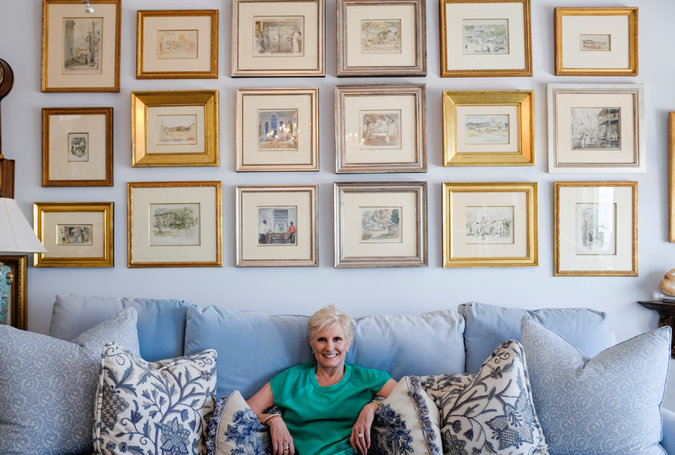
Credit
Andrew Sullivan for The New York Times
But Mrs. Gruss, who wants to put the money toward greater research for antidepressant drugs, said she wanted a scent that itself could be comforting to people with depression.
“Some of those fragrances can be relaxing and soothing and uplifting,” she said. “We don’t profess to practice medicine without a license, but the idea of aromatherapy has been quite well documented.”
These days, no scent is unattainable. Mr. LeGuernec occasionally auctions off his perfume-making skills for charity. He remembers his strangest project.
“A lady said, ‘I really want to make a perfume that smells like my horse,’” he recalled. “I said, ‘Whoa.’ ”
While the winning bidder was a serious equestrian, she didn’t want to smell like a stable but something redolent of her love of riding, which began in childhood.
“That kind of challenge I don’t get every day,” he said. “There is not a big brand that wants to launch a fragrance that smells like a horse. But in the end it was very sensual.”
He described what they created as musky and leathery, with orange blossom as the dominant floral scent.
Most of the time, of course, people would like to smell like a memory — a spring day in the mountains or the breeze off a favorite lake. But the struggle is one of translation: Perfumer and customer often do not speak the same language. One is describing something ephemeral; the other is trying to translate that into flowers and oils.
“When it’s bad, you’re starting to speak a lot to know what they mean and what they’re expecting,” Mr. Fontaine of Jean Patou said. “It’s the same problem you have if you’re working on a project or a brand and they don’t know what they want to sell to the consumer.”
Typically, it takes six months to a year to create a scent and at least half a dozen meetings. But that is predicated on the person having enough time to devote to the process, which even some of New York’s most soignée socialites do not want to expend.
Muffie Potter Aston said she had been wearing the same perfume — Fracas by Robert Piguet — since high school, with occasional dalliances with other scents.
“The olfactory nerve brings back all the memories of smells,” she said. “My mother wore Joy and Chanel No. 5, and if I smell someone wearing Joy or Chanel No. 5, I think of my mother. My grandmother wore Shalimar. If I smell someone wearing Shalimar, I think of my grandmother.”
Yet when Mrs. Potter Aston first started wearing Fracas, it was a scent she could get only in Paris.
“If I had a friend going to Europe or I was going to Europe, I always made sure I brought a bottle back,” she said. “Perfume doesn’t last forever. You can’t just go and buy 10 bottles. It’s elusive.”
(Perfume doesn’t like heat and light, Mr. Fontaine said, so don’t store bottles on the windowsill in your bathroom.)
But once Fracas became available at Neiman Marcus, the scent was less appealing to her. And now a couple of her friends on the New York social circuit also wear the scent.
She has been contemplating working with Kilian Hennessy, a perfumer living in Paris and descendant of the founder of the Hennessy Cognac company, to create her signature scent. Yet she has been hesitant to start the process.
“With my twin daughters, I haven’t had the time to pursue it,” she said. “They’re 10, and my signature scent these days is just clean, out of the shower. So many times I don’t have time to get the perfume on.”
But a perfume that is a signature scent provides, it seems, a contentment and confidence — whether what is in the bottle is off the shelf or concocted just for you.
“I’m happy that in the decade of excess, the perfume I chose was not that expensive,” Mrs. Bernhard said of her bespoke Cartier scent, “but it was the most fabulous thing for me.”
SOURCE:http://www.nytimes.com/2015/03/14/your-money/designing-personal-perfumes.html
